A SERIES OF WALKS ALONG THE EMBANKMENT
THIS PAGE IS PRODUCED IN CONJUNCTION WITH
DAVE HILL
VICTORIA EMBANKMENT GARDENS: PART SIX Continued
In Xanadu did Kubla Khan
A stately pleasure-dome decree:
Where Alph, the sacred river, ran
Through caverns measureless to man
Down to a sunless sea.
From Kubla Khan by Samuel Taylor Coleridge (1872-1834)
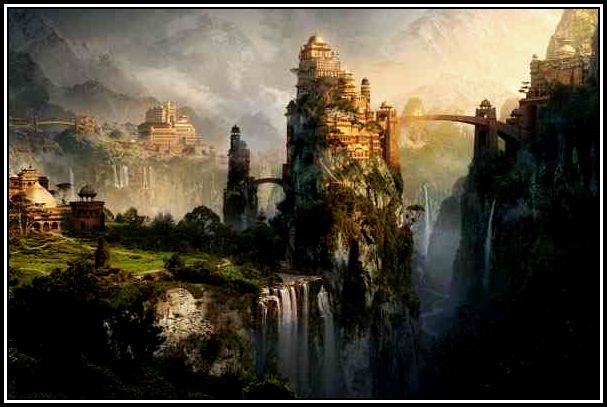 An Artist’s Impression of Xanadu
An Artist’s Impression of Xanadu
-oOo-
WHITEHALL COURT
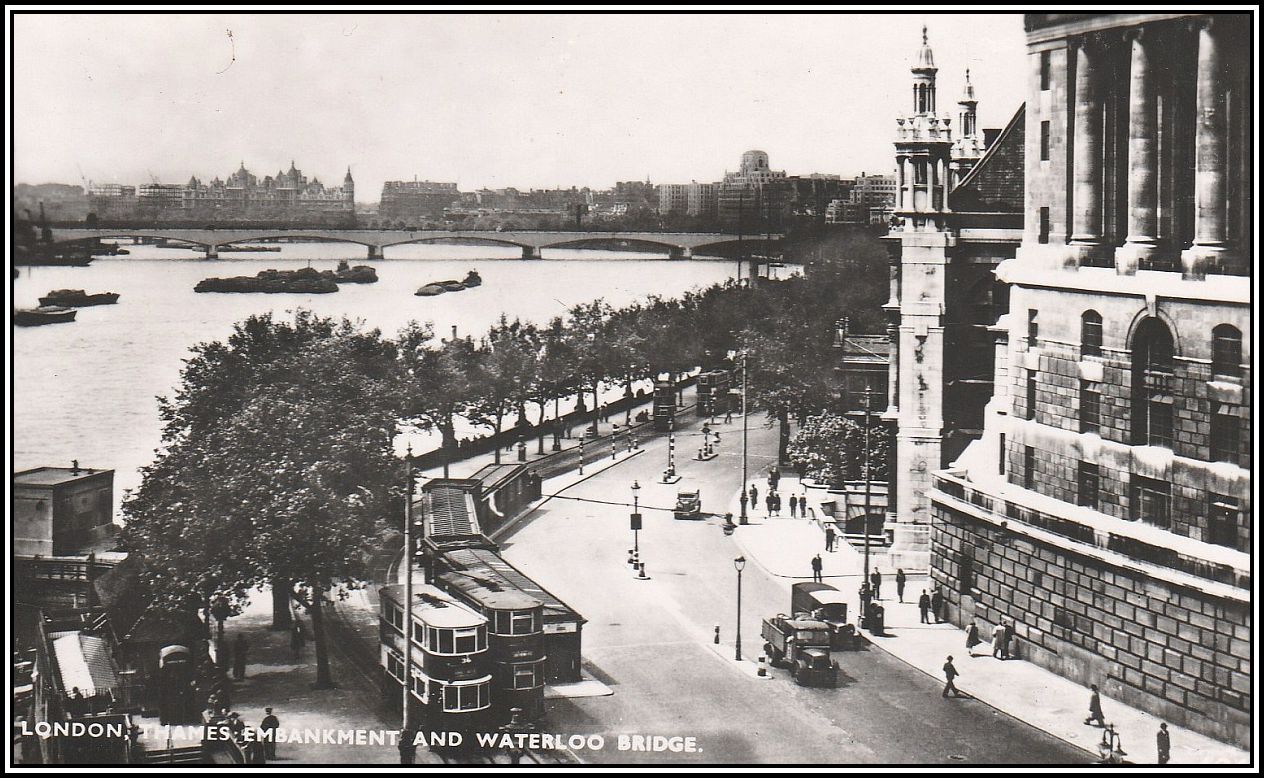 Whitehall Court is seen at the top left hand corner of the Postcard
Whitehall Court is seen at the top left hand corner of the Postcard
-oOo-
I think that Whitehall Court was the first buildings that I took notice of as a small child. It was during one of my father’s Walks along the Victoria Embankment when I first registered it. I remember walking onto Waterloo Bridge with my parents on that occasion to look back at the North Bank skyline.
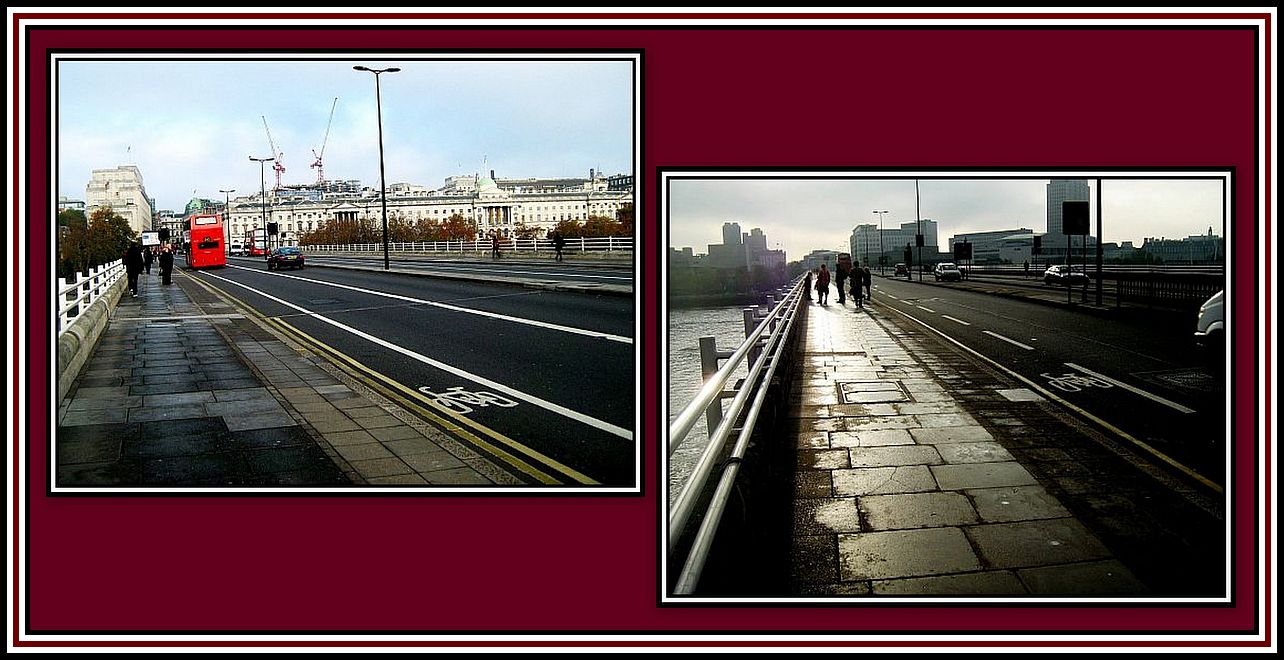 On Waterloo Bridge looking North (Left) and South (Right)
On Waterloo Bridge looking North (Left) and South (Right)
My father always enjoyed looking at and going onto the Bridge. He liked to walk about halfway across and look first to the east towards St. Paul’s Cathedral and then, after crossing the road, west.
 Looking East from Waterloo Bridge
Looking East from Waterloo Bridge
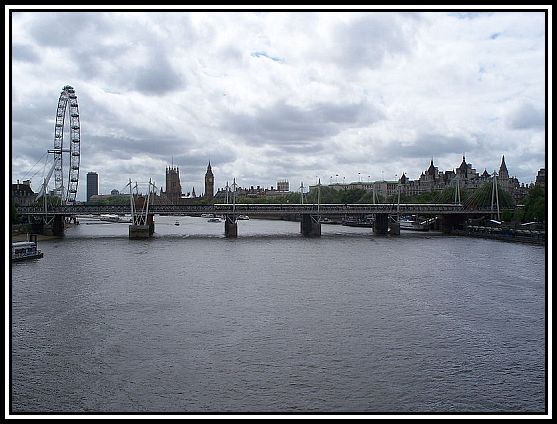 Looking West from Waterloo Bridge showing Whitehall Count on the Right
Looking West from Waterloo Bridge showing Whitehall Count on the Right
Before I was able to look over the Bridge, I would be lifted up by either my mother or father to enjoy the view. At first, I was far more interested in the river traffic and the larger ships that once were moored on the North Bank rather than in the buildings. I enjoyed seeing the tugs, barges and pleasure boats chugging up and down the river. In those days, London was a major port and the River Thames was much busier than it is today.
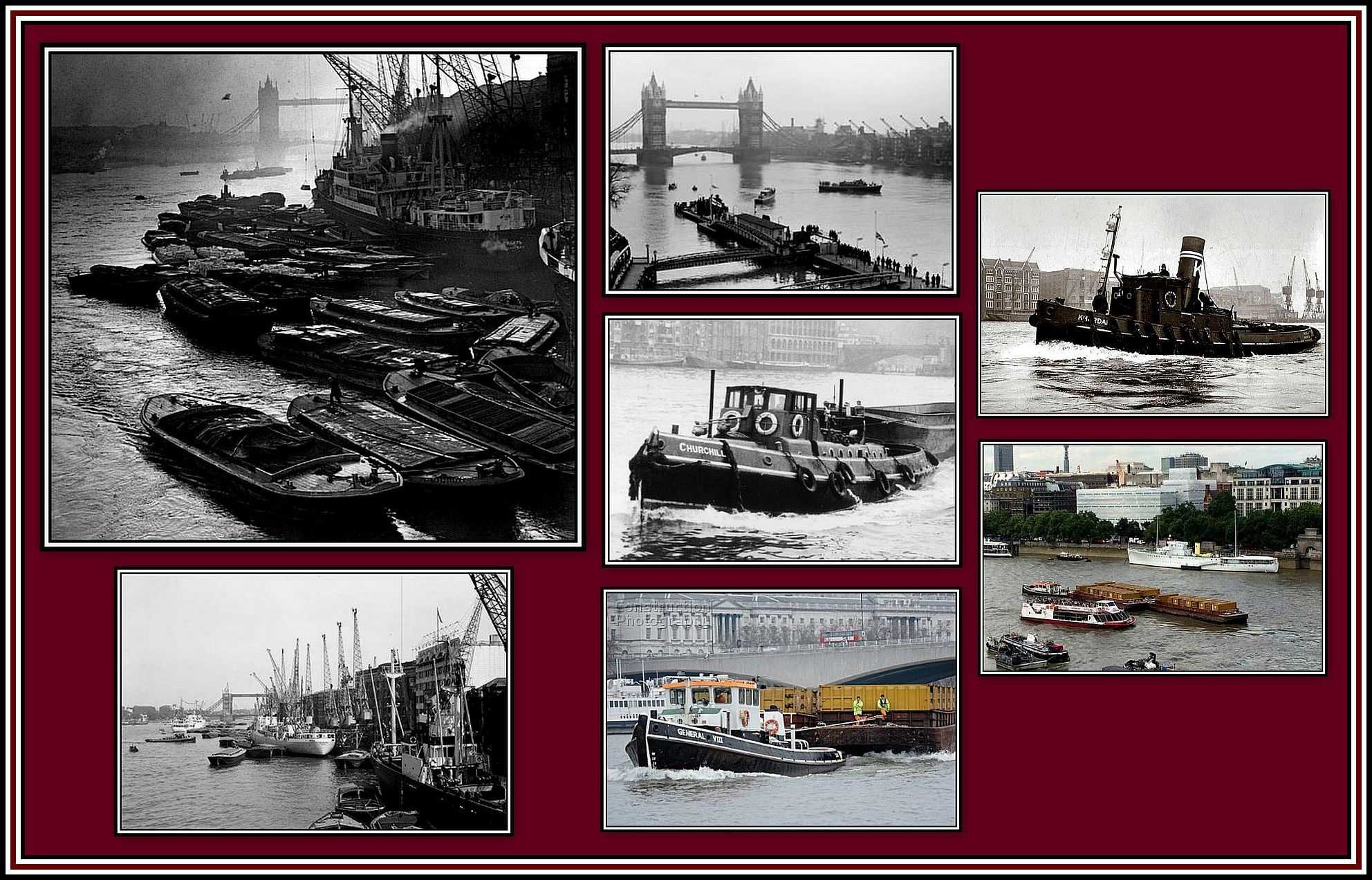 The River & Its Traffic ….. Then & Now
The River & Its Traffic ….. Then & Now
I remember clearly one day standing on Waterloo Bridge and looking back at the buildings on the North Bank, and noticing for the first time, this mystical building that was very different from those around it. Once I noticed this glorious and exotic building, despite my young age, my imagination ran free and ran wild!
-oOo-
My mother had introduced me to the Bethnal Green Public Library at a very young age and we made regular visits there to look at books and to borrow some. At first, being unable to read Big Boy Books, I had to content myself by looking at photographs and paintings in them. The first historical character that I discovered was Admiral Horatio Nelson (1758-1805). The librarian at the check-out desk was highly amused when I presented a huge book on the history of Nelson. She laughed away since she thought I believed that I was going to read this advanced book and hadn’t realised that I was borrowing it simply to look at the Plates showing the great battle scenes.
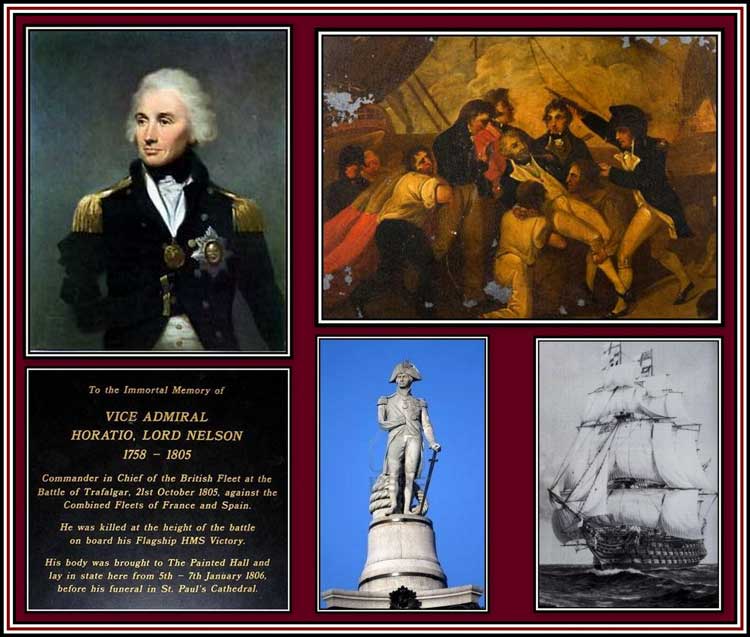 Horatio Nelson, 1st Viscount Nelson
Horatio Nelson, 1st Viscount Nelson
-oOo-
During one of our visits to the Library, I believe that I must have come across a copy of the Tales of the Thousand and One Nights and was evidently impressed with the exotic paintings and drawings used to illustrate the stories, since again, I was far too young to read the Tales myself.
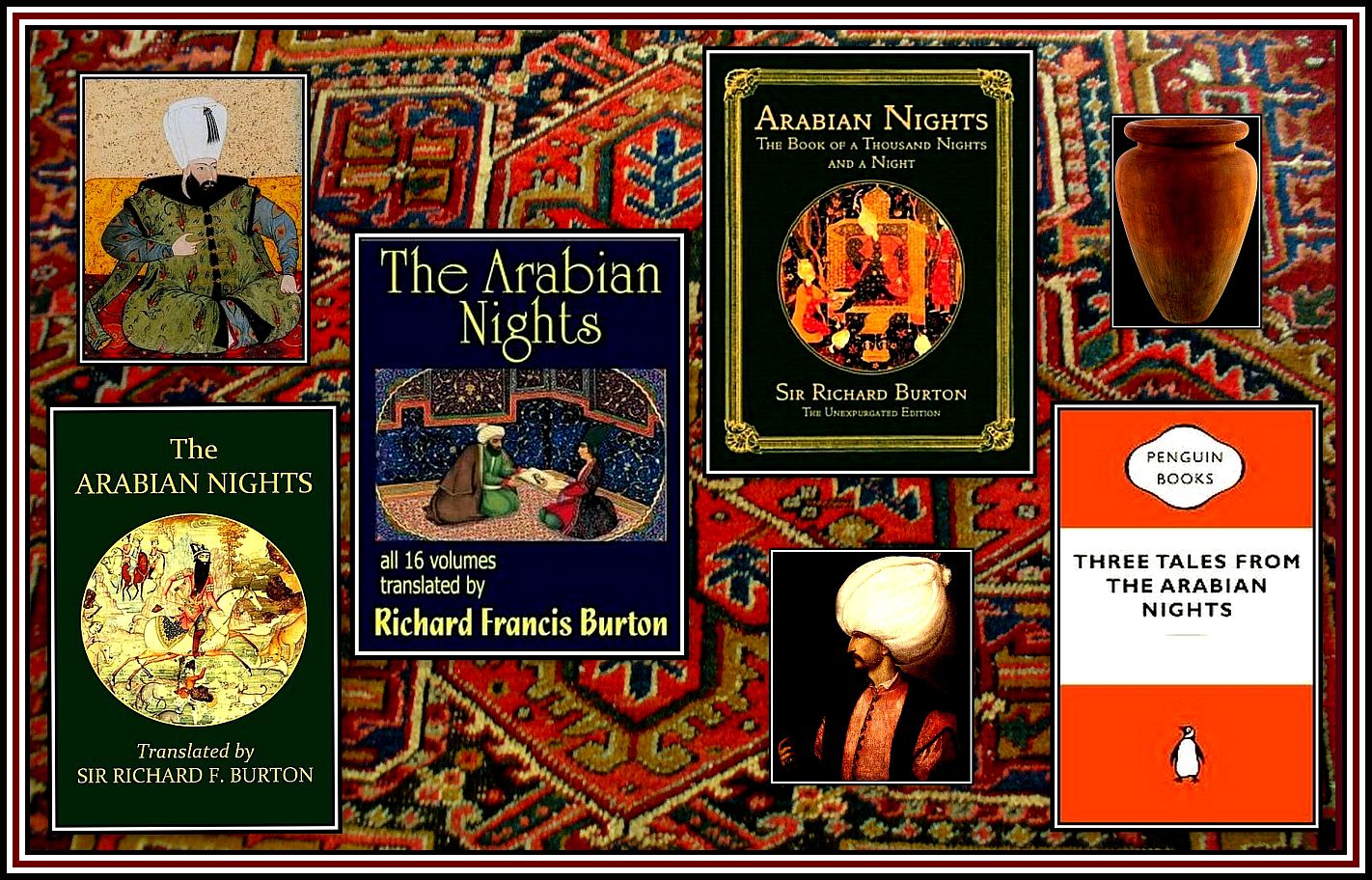 A Thousand and One Nights, Tales of the Arabian Nights
A Thousand and One Nights, Tales of the Arabian Nights
Later I would learn that the book told of the amazing Tales related each night by the Vizier’s daughter, Scheherazade to the Potentate or Shahryār in order to save her life. Scheherazade never allowed herself to complete a Tale on the night of telling, but left the Potentate waiting until the next evening to hear its ending. Following this, he demanded she start a fresh Tale, which she did until the 1,001th Night where she admitted that she had no more.
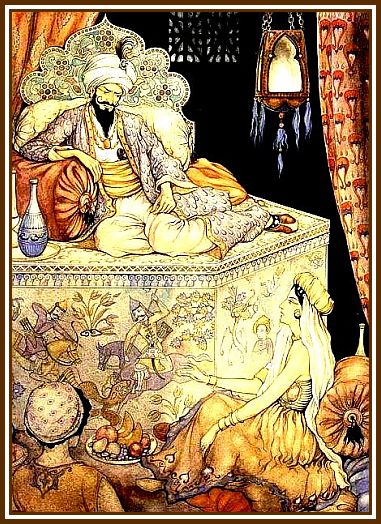 The Arabian Nights by Anton Pieck (1895-1987)
The Arabian Nights by Anton Pieck (1895-1987)
While seated on his magnificent throne each evening, the Potentate listened to the Tales told by Scheherazade
Scheherazade, 2nd Movement by Rimsky-Korsakov (1844-1908): The Young Prince & The Young Princess; performed at the Salzburg Festival, 2005, by the Vienna Philharmonic Orchestra with Valery Gergiev, conductor
The Tales of the Thousand and One Nights consist of a variety of tales including fairy tales, fables, romances, farces, legends and parables. The stories are fanciful and at times brutal and are not always intended for children. Their settings are varied and include the lands of the Middle East, Greece and North Africa. Many of the tales have existed for thousands of years and have proven to be an inspiration to writers throughout the world.
to read an assortment of The Tales of the Thousand and One Nights and also to listen to The Tale of Ali-Baba and The Forty Thieves
-oOo-
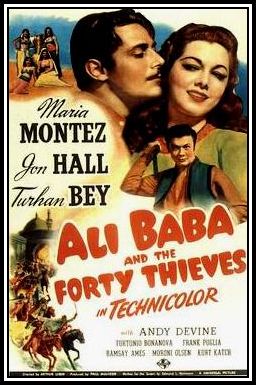 Poster of the film, Ali-Baba and The Forty Thieves (1944)
Poster of the film, Ali-Baba and The Forty Thieves (1944)
A number of films has been made based on The Tales of the Thousand and One Nights. Of those that I have seen, and I have seen many, my favourite is the French film, Ali-Baba et Les Quarante Voleurs (1954), which starred the great actor, Fernandel (1903-1971).
-oOo-
In my naivieté, I assumed that Whithall Court, this glorious building on the North Bank of the River Thames, was indeed an Eastern Palace, like one of those illustrated in the book. My imagination ran wild and free and I assumed that it had to be filled with sumptuously decorated Halls covered with thick decorative carpets and filled with ambassadors and dignitaries waiting to be ushered into the Main Hall where a Potentate or Shahryār sat on a magnificent throne bedecked with glittering jewels.
The Potentate surrounded by huge silken cushions to ensure his comfort and dressed in richly decorated robes made of the finest fabrics topped by a grandiose Turban on his head complete with a large ruby at its centre.
I imagined the Potentate passing his days accepting a multitude of presents from the numerous and varied dignities waiting to be ushered in his presence from the anti-chambers.
Between such audiences, the Potentate would take time to be entertained by beautiful young ladies who danced to appropriate music played by a small group of players hidden away in one of the corners of the Hall.
While enjoying the entertainment, the Potentate would sample a variety of sweetmeats offered for his pleasure on golden trays that were being held up to him by a number of flunkies who remained in a groveling position on their knees until choices were made.
-oOo-
Scheherazade, 1st Movement by Rimsky-Korsakov: The Sea & Sinbad’s Ship
Scheherazade, 2nd Movement by Rimsky-Korsakov: The Kalender Prince
Scheherazade, 4th Movement by Rimsky-Korsakov: Festival at Baghdad, The Sea & The Ship breaks against a cliff surmounted by a bronze Horseman
All pieces performed at the Salzburg Festival, 2005, by the Vienna Philharmonic Orchestra with Valery Gergiev, conductor
-oOo-
I had no idea of the name of the building and neither did my parents. I asked teachers and others if they knew the name. Some had no idea what I was talking about probably because I did not describe the building well. I remember once someone told me that the building was in fact the War Office.
The War Office? Evidently this was exotic enough for me since I obviously accepted the name and seemingly thought no more about it.
It amuses me to note that I considered the building to be the War Office until about two years ago when I finally discovered the truth about the building’s identity!
In addition, I have recently learned that I was not alone in mistaking the identity of the building.
-oOo-
So what then is the true identify of this glorious building? Although not the War Office, it was taken over by the Ministry of Defense during both World Wars and was used as the Headquarters of the Secret Intelligence Service (MI6) until the end of the First World War.
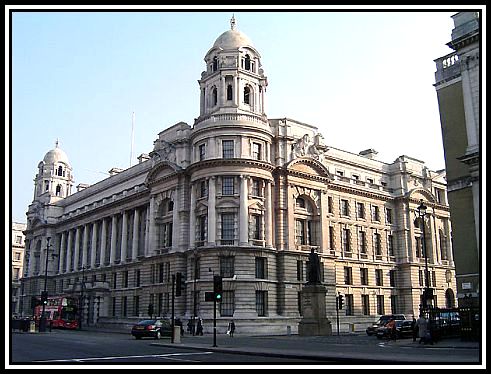 Old War Office Building on Whitehall
Old War Office Building on Whitehall
-oOo-
Whitehall Court was built between 1884 and 1887 and is of two separate buildings joined to form one contiguous structure. The building is built in a Châteuesque Style, which is a revival architectural style based on the French Renaissance Architecture of the Châteaux of the Loire Valley.
When facing Whitehall Court with one’s back towards the River, the region of the building to the right makes up one part of the building. This part of the Court was designed by Alfred Waterhouse (1830-1905) and has been occupied by The National Liberal Club since 1904. In 1985, part of the Club area (i.e. its bedrooms) were taken over by The Royal Horseguards Hotel, which occupies the other part of the Court.
 Whitehall Court – The Wing designed by Alfred Waterhouse
Whitehall Court – The Wing designed by Alfred Waterhouse
Mr. Waterhouse also designed a large number of other buildings, including the Manchester Town Hall, the Natural History Museum and Manchester Assize Courts and showed great versatility in his chosen architectural styles.
The Southern Part, and incidentally the major part of Whitehall Court, was designed by the architects Thomas Archer and Arthur Green, who were also responsible for designing the Hyde Park Hotel. Its building was financed by Jabez Balfour (1843-1916) who was a businessman, politician and later fraudster after becoming involved in business scandal.
Whitehall Court proved to be the centre piece of an elaborate Pyramid Scheme by Mr. Balfour through the Liberator Building Society, which he controlled. In 1892 the Society collapsed, causing the investors to lose their money. Apparently the Society had advanced money to companies rather than home buyers to purchase properties owned by Mr. Balfour for a high price. He fled to The Argentine, but was brought back to the UK where he was tried, convicted and imprisoned.
This section of Whitehall Court was built as a series of luxury residential apartments, but has housed, in part, the Royal Horseguards Hotel since 1971, which has been operated by Guoman Hotels, a subsidiary of Thistle Hotels, since 2008.
In addition, part of this section of Whitehall Court also houses The Farmer’s Club, which is a Gentlemen’s Club. The Club was founded in 1842 with members of the Royal Agricultural Society of England. In 1904, the Club moved to 2 Whitehall Court and remained here until 1942 when it moved to next door to Number 3. Their former premises in the building is now part of the Royal Horseguards Hotel.
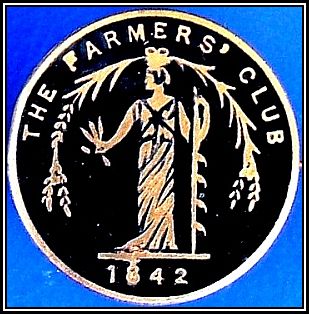 Membership Badge of The Farmer’s Club
Membership Badge of The Farmer’s Club
In view of Whitehall Court’s excellent location, a number of prominent people have occupied apartments here and have included the authors H.G. Wells (1866-1946) and George Bernard Shaw (1856-1950) and the politicians Sir Stafford Cripps (1889-1952) and William Gladstone (1809-1898). Both Lord Kitchener (1850-1916) and the Grand Duke Michael of Russia (1878-1918) also once lived here.
-oOo-
Although Whitehall Court was not an Eastern Palace and home of a fabulously wealthy and powerful Potentate where exotic happenings took place, as I once believed, I still find the building to be a glorious site when viewed from any location.
——oooOOOooo——
ACKNOWLEDGEMENTS
I would like to thank Mr. Paul Bland for his help in the writing of this piece.
——oooOOOooo——
Click here to GO to PART SEVEN: VICTORIA EMBANKMENT GARDENS – THE MINISTRY OF DEFENCE GARDENS
——oooOOOooo——
Click here to RETURN to PART FIVE: VICTORIA EMBANKMENT GARDENS – MAIN GARDENS
——oooOOOooo——
Click here to RETURN to A SERIES OF WALKS ALONG THE EMBANKMENT Home Page
——oooOOOooo——
Click here to GO to AN ADDITIONAL SET OF POSTCARDS OF OLD LONDON: THE EMBANKMENT by DAVE HILL
——oooOOOooo——
Click here to GO to ISAMBARD KINGDOM BRUNEL
——oooOOOooo——
Click here to RETURN to the TABLE OF CONTENTS
——oooOOOooo——

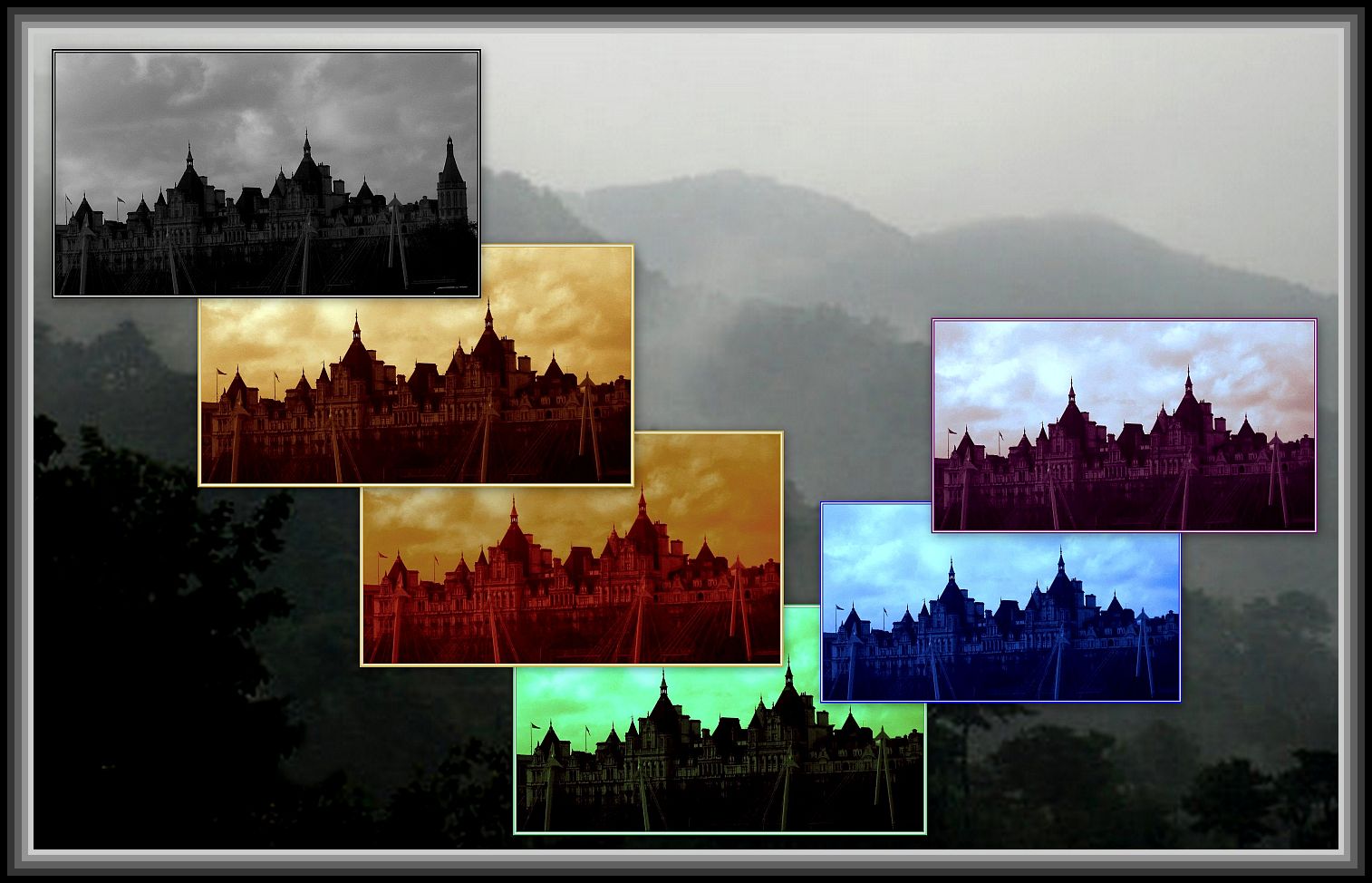
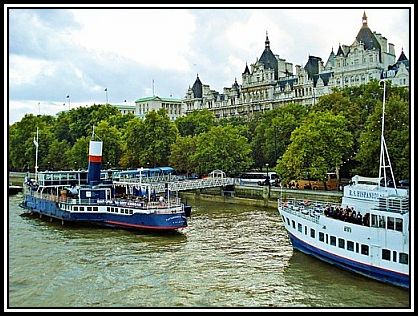
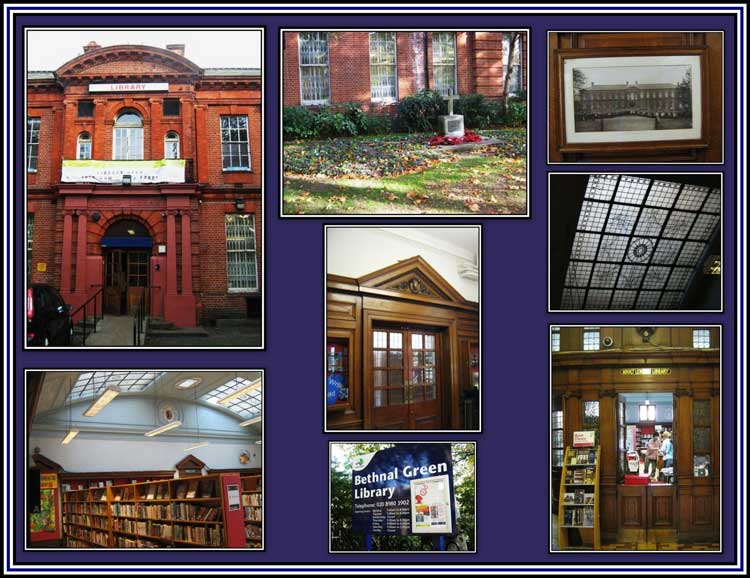
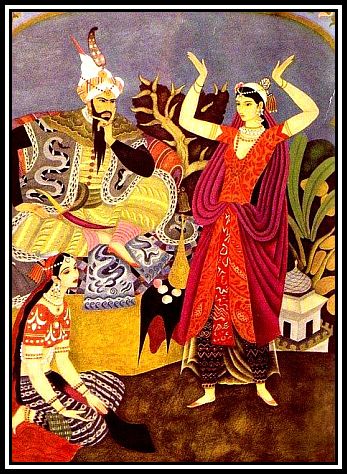
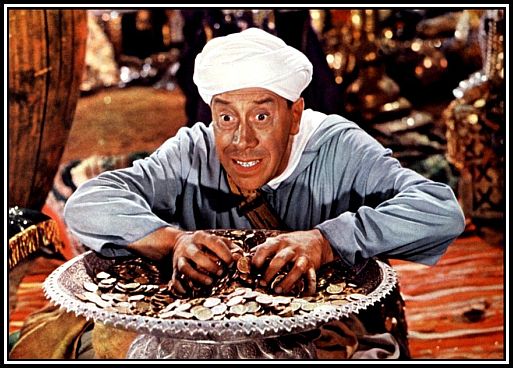
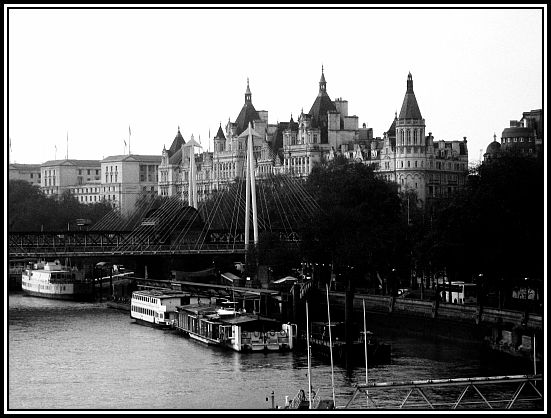
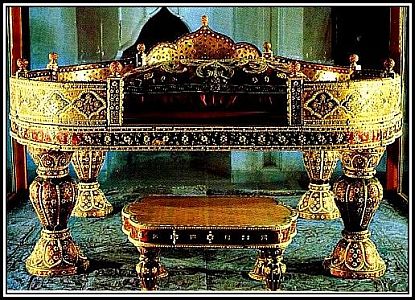
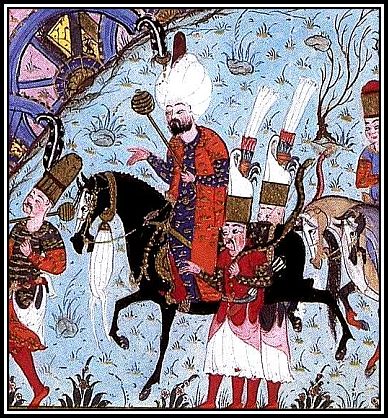
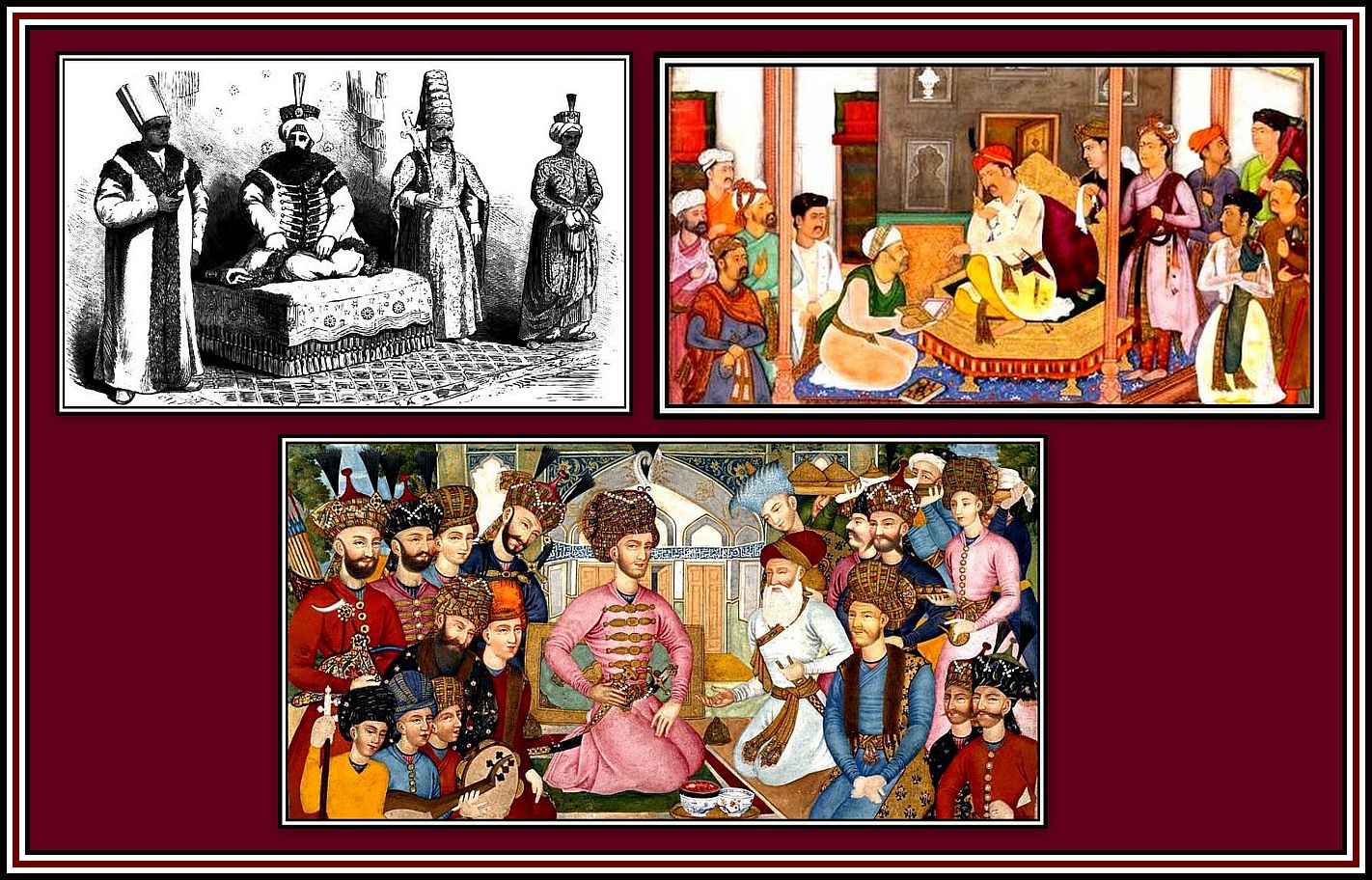
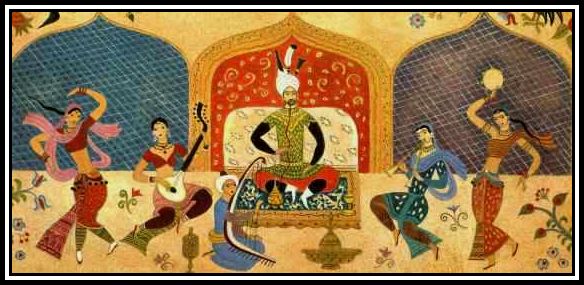

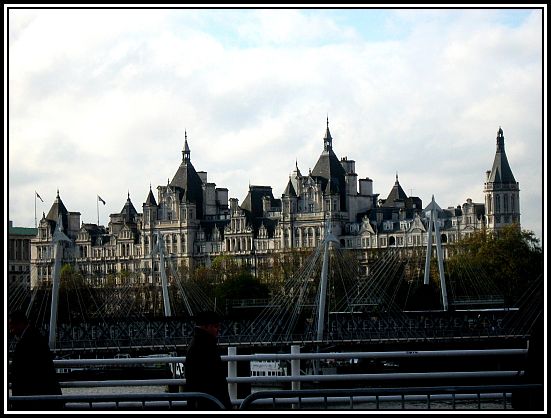

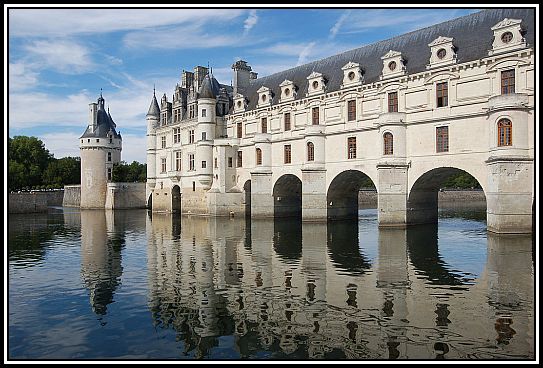
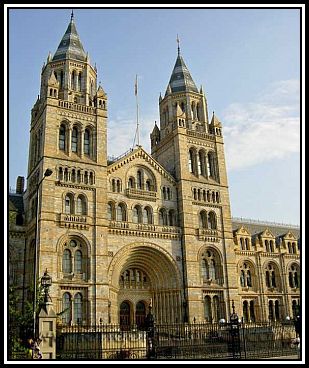
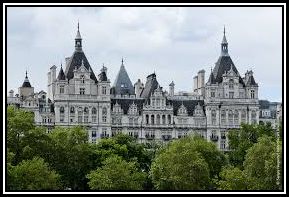
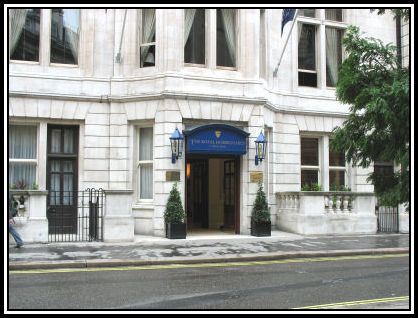
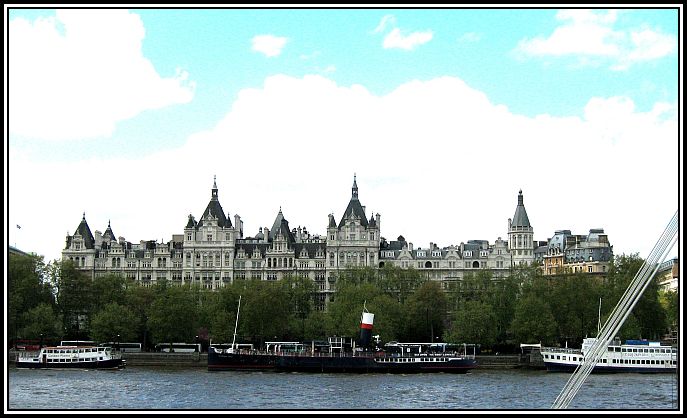
Charles, it was a pleasure to read and to see, and in addition, the background music from Scheherazade made it fantastic. Thank you
Thank you for telling the history of this imposing building. And highlighting the many memorials – I am ashamed to say I have never seen.
Thank you for the website, very cultural and interesting.
Thank you for writing. Charles
I stayed at 2 Whitehall Court for some days several days. I found it to be austere and creepy! Its external elegance is undoubted however.
I have a relative who appears in the Westminster Electoral rolls in the late 1950’s as living at Whitehall Court but no number is given. She appears in a list of all women and I wonder if it may have been staff, either for the apartments or hotel or the clubs. Does anybody know where such records might be kept and are they accessible to the General Public.
Your description of the Farmer’s Club at Whitehall Court as an ..er…Gentleman’s Club is incorrect. It is the London base for the UK farming industry and has a long and fascinating history dating back to 1842.
Apart from that detail I found your site very useful and well constructed. I got to it via Andrew Cook’s Ace of Spies where Archer & Green: architects are mentioned in a footnote.
Thanks
Thanks for this correction.
I worked at Whitehall Court from 1956 to 1963. It was owned by the Hornsby family and then there was the ‘hostile take over’ by City Centre. There were a number of gentlemens’ clubs – which were exactly that. Royal Tank reg. Fly fishers. Golfers. Farmers. Junior army and Navy and more.
Residential Flats – some company owned, but others private. The clubs had bedrooms available for the members for overnight stays. Group Captain Peter Townsend stayed there and always left by the exit where the press waited – when there were several others he could have used. Sir Hugh Foot had a guard because of Cyprus when he stayed..
Banqueting suites – weddings etc. Masonic Lodge and Chapter facilities. Main dining restaurant and club restaurants.
Vicki:
Many thanks for sending your email and giving us such interesting information.
With regards.
Charles